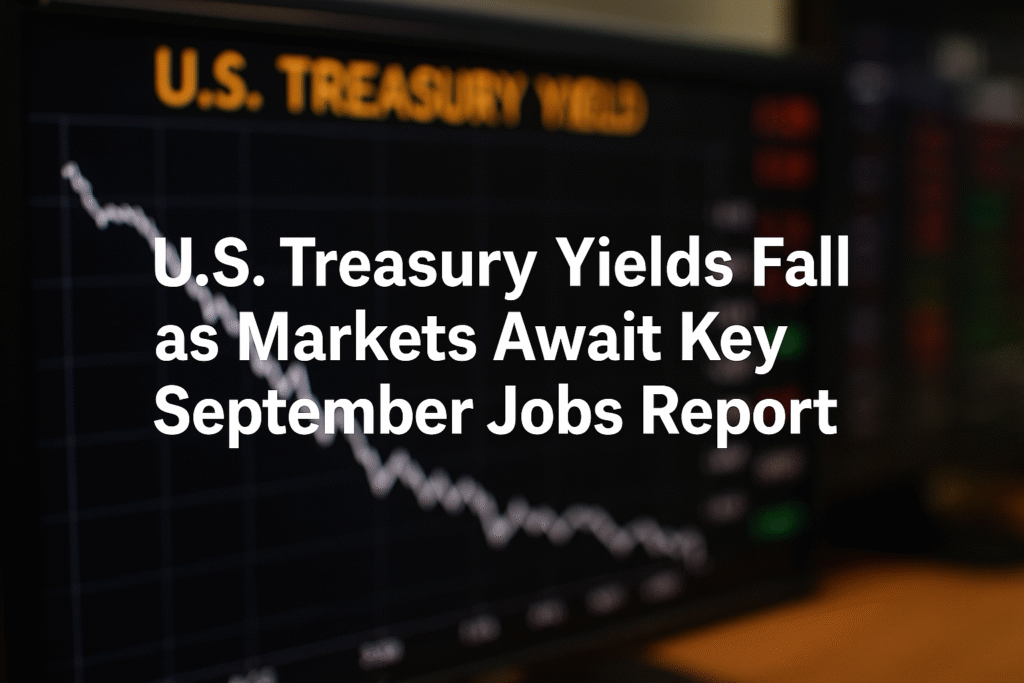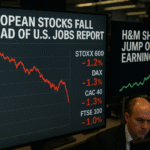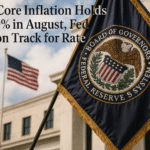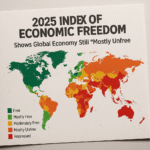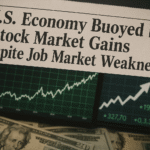By Harshit, New York, September 29, 2025 – 4:30 AM ET: U.S. Treasury yields moved lower early Monday as investors turned their attention to a packed week of economic releases, highlighted by the upcoming September nonfarm payrolls report. The data is expected to play a decisive role in shaping the Federal Reserve’s monetary policy outlook for the remainder of the year.
Market Moves in Early Trading
At 4:10 a.m. ET, the 10-year Treasury yield was down more than 4 basis points to 4.143%, while the 2-year yield slipped 2 basis points to 3.625%. The 30-year yield fell more than 5 basis points to 4.714%.
Shorter maturities edged in mixed directions:
- The 1-month Treasury rose to 4.147% (+0.012).
- The 1-year Treasury stood at 3.681% (+0.01).
- The 3-month Treasury inched up to 3.971% (+0.01).
- The 6-month Treasury settled at 3.868% (+0.005).
Yields and prices move inversely, with one basis point equal to 0.01%. The declines across longer-dated maturities reflect cautious investor sentiment heading into Friday’s jobs data.
Economic Growth and Jobs Outlook
The September nonfarm payrolls report, due Friday morning from the Bureau of Labor Statistics, is expected to show the U.S. economy added just 59,000 jobs, with the unemployment rate holding steady at 4.3%, according to consensus estimates from FactSet.
However, economists warn that the figure could surprise on the downside, with some not ruling out a negative reading. Such an outcome would deepen concerns about stagnation in the labor market, where job openings have already fallen to multi-year lows.
“The jobs number feels like the pendulum factor when we think about monetary policy,” said Marta Norton, Chief Investment Strategist at Empower Investments. “If jobs look strong, markets might question whether rate cuts are really coming. But if jobs collapse, recession fears will dominate.”
Inflation, Monetary Policy, and Fed Expectations
The Federal Reserve cut rates for the first time in 2025 earlier this month, lowering its benchmark borrowing range to 4%–4.25%. Traders are now pricing in two additional rate cuts before year-end, one in October and another in December, in line with Fed guidance.
The upcoming jobs data will be pivotal in confirming or challenging those expectations. Stronger-than-expected employment growth could delay cuts, while weak numbers may accelerate easing.
“The labor market is the swing factor right now,” one New York-based bond strategist said. “The Fed has to balance inflation, which is still above target at 2.9%, with risks of a sharper slowdown.”
Political Uncertainty: Shutdown Risks
Another cloud over the economic picture is the looming threat of a federal government shutdown. Lawmakers face a September 30 deadline to pass a funding bill, but Democrats and Republicans remain at odds over spending priorities.
The release of Friday’s jobs report could even be delayed if the shutdown goes into effect, adding to market uncertainty. Investors are also bracing for Tuesday’s JOLTS job openings report and Thursday’s weekly jobless claims, both of which will provide additional labor market insight.
Market Reactions and Investor Sentiment
Equity futures pointed to a cautious start Monday, with traders wary of both macroeconomic data and political risks. The bond market’s move lower in yields reflects a defensive stance by investors seeking safe-haven assets amid the uncertainty.
“The bond market is telling you that investors don’t want to be caught flat-footed ahead of the jobs report,” said one Wall Street trader. “Volatility is likely to pick up sharply depending on the outcome.”
Outlook and Analysis
For now, the U.S. economy appears resilient on the surface, with GDP growth for the second quarter revised upward to 3.8% and consumer spending showing strength. However, with payrolls growth stalling and household confidence slipping, the labor market’s trajectory has become the single most important indicator for policymakers and markets alike.
As September 29 begins, attention remains squarely on whether Friday’s jobs report confirms a gradual cooling or signals a sharper downturn. Either way, the findings will heavily influence the Federal Reserve’s next move — and the path of U.S. markets into year-end.

